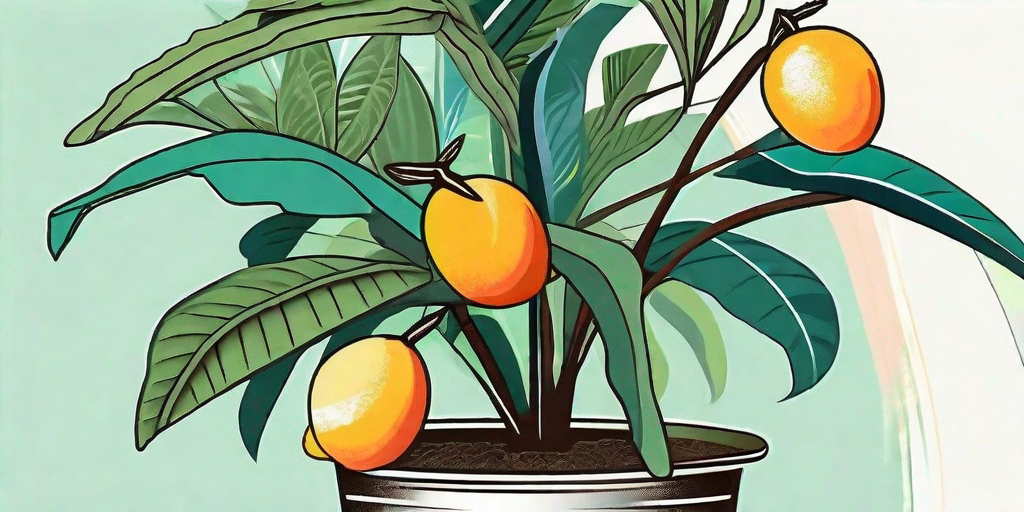
Ah, the mango tree. A symbol of tropical paradise, a beacon of deliciousness, and a testament to your green thumb. But how does one go about growing this exotic beauty in a pot? Fear not, dear reader, for we are about to embark on a horticultural adventure that will transform your living room into a tropical oasis. So, put on your gardening gloves, grab your pot, and let's get started.
The Mango Tree: A Brief Introduction
Before we dive into the nitty-gritty of mango cultivation, let's take a moment to appreciate this magnificent tree. The mango tree, or Mangifera indica if you want to get scientific, is a member of the Anacardiaceae family. This tropical beauty is native to South Asia and has been cultivated for over 4,000 years. It's not just a pretty face, either. The mango tree is known for its delicious fruit, which is packed with vitamins, minerals, and antioxidants.
Now, you might be thinking, "A tree? In a pot? Surely you jest!" But fear not, dear reader. With the right care and attention, you can indeed grow a mango tree in a pot. And the best part? You'll have your very own supply of delicious, home-grown mangoes. Now, isn't that a-peeling?
Choosing the Right Mango Seed
Like any great adventure, our journey begins with a single step: choosing the right mango seed. Not all mango seeds are created equal, and the type of seed you choose can have a big impact on your tree's growth and fruit production.
There are two types of mango seeds: monoembryonic and polyembryonic. Monoembryonic seeds produce a single plant, while polyembryonic seeds can produce multiple plants. For pot cultivation, we recommend using a monoembryonic seed, as they are less likely to overcrowd your pot.
Where to Find Mango Seeds
Now, you might be wondering, "Where do I find a mango seed?" The answer is simple: inside a mango! Yes, that's right. The next time you enjoy a delicious mango, save the seed. It's like getting a two-for-one deal: a tasty snack and a future tree.
But what if you don't have access to fresh mangoes? Fear not, dear reader. You can also purchase mango seeds online or at your local garden center. Just make sure to choose a reputable seller to ensure you're getting a high-quality seed.
Planting Your Mango Seed
Now that you've got your seed, it's time to get planting. But before you start digging, there are a few things you need to know.
First, mango seeds need to be soaked in water for 24 hours before planting. This helps to soften the seed and promote germination. After soaking, you'll need to remove the outer husk to reveal the inner seed. Be careful not to damage the seed in the process.
Choosing the Right Pot
When it comes to choosing a pot for your mango tree, size matters. Mango trees need plenty of room to grow, so choose a pot that's at least 20 inches in diameter and 20 inches deep. The pot should also have good drainage to prevent waterlogging.
Once you've chosen your pot, fill it with a well-draining potting mix. You can purchase a pre-made mix or make your own by combining equal parts compost, perlite, and peat moss.
Planting the Seed
Now, it's time to plant your seed. Place the seed in the center of the pot, with the hump side up. Cover the seed with about an inch of potting mix, then water thoroughly.
Place the pot in a warm, sunny location. Mango trees love the sun, so the more light they get, the better. With proper care, your seed should germinate in about two weeks.
Caring for Your Mango Tree
Now that you've planted your seed, it's time to play the waiting game. But don't just sit there twiddling your thumbs. There are plenty of things you can do to ensure your mango tree grows strong and healthy.
Watering
Mango trees love water, but too much of a good thing can be harmful. Overwatering can lead to root rot, which can kill your tree. To prevent this, only water your tree when the top inch of soil is dry. And remember, it's better to underwater than overwater.
Fertilizing
Just like us, mango trees need a balanced diet to stay healthy. Feed your tree with a balanced fertilizer once a month during the growing season. Avoid over-fertilizing, as this can lead to salt buildup in the soil.
Pruning
Pruning is an essential part of mango tree care. Regular pruning helps to maintain the tree's size, shape, and fruit production. Prune your tree in late winter or early spring, before the new growth starts.
FAQs
- How long does it take for a mango tree to bear fruit?
Patience is a virtue, dear reader. It can take anywhere from 5 to 8 years for a mango tree to bear fruit. But trust us, the wait is worth it.
- Can I grow a mango tree indoors?
Absolutely! In fact, growing a mango tree in a pot is a great way to bring a touch of the tropics into your home. Just make sure your tree gets plenty of light and warmth.
- What's the best time to plant a mango seed?
The best time to plant a mango seed is in the spring or early summer. This gives the tree plenty of time to establish itself before the cooler weather sets in.
And there you have it, dear reader. With a bit of patience, a dash of care, and a sprinkle of love, you too can grow your very own tropical paradise. So, what are you waiting for? Grab your pot, get your seed, and start growing!











